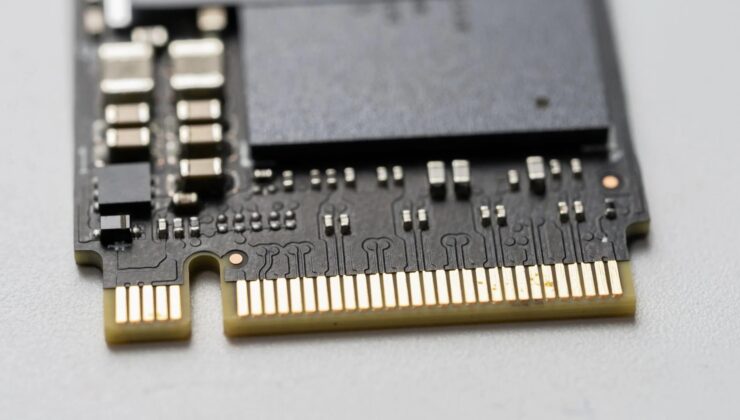

Researchers from Fudan University, a prestigious institution in China, have reached a significant milestone in the realm of semiconductors. They have developed a next-generation graphene-based flash memory device dubbed “PoX”, which can write data in an astonishing 400 picoseconds. This equates to four hundred trillionths of a second, marking the fastest data write time ever recorded in semiconductor technology. In practical terms, PoX is capable of executing 25 billion operations per second, making it about 10,000 times faster than any comparable technology available today.

As artificial intelligence systems become increasingly sophisticated, the demand for rapidly processing massive amounts of data intensifies. This requires not only faster processors but also memory systems with unparalleled speeds. Current memory technologies face a paradox: while volatile memories like static RAM (SRAM) and dynamic RAM (DRAM) offer incredible speeds, they lose all stored data once power is removed. In contrast, non-volatile solutions like flash memory retain data without power but suffer from slower access speeds, typically ranging from microseconds to milliseconds.

To bridge this gap, scientists have reimagined the architecture of flash memory. Departing from traditional silicon, they have opted for graphene, celebrated for its exceptional electrical characteristics, structured around the Dirac point. (Graphene’s electrons exhibit unique movement properties, thanks to its unconventional energy band structure. At the “Dirac point,” the conduction and valence bands converge, allowing electrons to travel as if massless, at speeds approximately 300 times slower than light, yet still remarkably fast.)
The research team leveraged graphene’s ballistic transport attributes to optimize the “Gaussian length” of the memory channel, devising a novel mechanism known as “super-injection”. This innovation facilitates virtually unimpeded charge transfer to the data layer, effectively eliminating the speed constraints of conventional non-volatile memory.
A significant drawback of current hardware is the gap between processor speeds and memory performance. PoX not only resolves this issue but also reduces energy waste associated with data movement through its low power consumption. This advancement promises to revolutionize the efficiency of data processing in modern technology.
ENGLİSH
7 gün önceSİGORTA
7 gün önceSİGORTA
7 gün önceSİGORTA
11 gün önceSİGORTA
12 gün önceSİGORTA
12 gün önceDÜNYA
21 gün önce 1
Elon Musk’s Father: “Admiring Putin is Only Natural”
11634 kez okundu
1
Elon Musk’s Father: “Admiring Putin is Only Natural”
11634 kez okundu
 2
7 Essential Foods for Optimal Brain Health
11455 kez okundu
2
7 Essential Foods for Optimal Brain Health
11455 kez okundu
 3
xAI’s Grok Chatbot Introduces Memory Feature to Rival ChatGPT and Google Gemini
10867 kez okundu
3
xAI’s Grok Chatbot Introduces Memory Feature to Rival ChatGPT and Google Gemini
10867 kez okundu
 4
Minnesota’s Proposed Lifeline Auto Insurance Program
9556 kez okundu
4
Minnesota’s Proposed Lifeline Auto Insurance Program
9556 kez okundu
 5
Introducing Vivo Y300 Pro+: A Blend of Power and Affordability
7489 kez okundu
5
Introducing Vivo Y300 Pro+: A Blend of Power and Affordability
7489 kez okundu
Veri politikasındaki amaçlarla sınırlı ve mevzuata uygun şekilde çerez konumlandırmaktayız. Detaylar için veri politikamızı inceleyebilirsiniz.